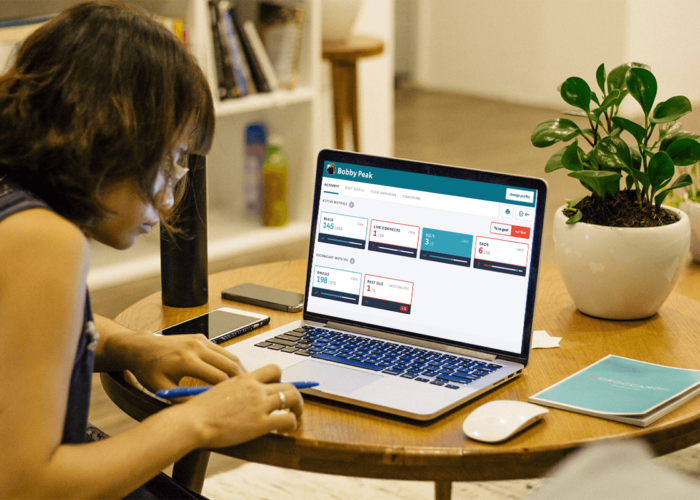 “We don’t run sales contests, because we don’t want to create a competitive work environment.” More than a few sales leaders have told me this when talking sales performance.
“We don’t run sales contests, because we don’t want to create a competitive work environment.” More than a few sales leaders have told me this when talking sales performance.
First of all, it’s important to note that a clear difference stands between competition in a healthy environment and competition in an unhealthy one. Sales leaders should take caution to keep things healthy. (Read more about that here.)
But as for the idea that sales contests might create a competitive work environment, we’ve got news: Whether you run contests or not, there’s already competition in your workplace. We’re all competitive. Or so says the Association for Psychological Science (APS), whose study “The Psychology of Competition: A Social Comparison Perspective” supports what you’re about to read.
[Check out our eBook: “1o Sales Contest Ideas That Work.”]
Social Comparison Theory
So there’s this thing called social comparison theory, which means that we all have a basic drive to improve our performance and at the same time minimize or prevent any discrepancies between our level of performance and that of other people.
The whole part about minimizing discrepancies results in competitive behavior — when we notice a gap in performance between us and someone we’re comparing ourselves to, we try to protect our superiority. That’s called “comparison concerns.”
These comparison concerns, and the competitiveness that comes with them, come into play in all sorts of situations, from running next to someone at the gym and deciding to speed up, to noticing a co-worker has more Twitter followers and deciding to step up our tweeting game.
The theory plays a role at work, too. Those of you running sales contests can even leverage it to get greater competition going, while still maintaining a healthy environment.
Leveraging Social Comparison Theory in Sales Contests
All sorts of components play into social comparison theory, and all sorts of ways exist to tie those components back to sales contests. Here are four of them:
1. Divide participants by similarity.
Comparison concerns, and therefore competitiveness, increase when an individual perceives the person they compare themselves with as similar to them, either in ability or performance. “Similar” can mean related personal characteristics, the same professional role or a pretty broad range of other commonalities.
So, when you build out your next sales contest, try to put together people who are as similar as possible. This could be as simple as having different contests for sales development reps than account executives, or maybe creating contests where people with similar performance levels compete against one another (which we recommend anyway, because it tends to create a healthier sales environment).
2. Keep behaviors relevant.
Competitive spirit also heightens when individuals compete around something relevant or important to them.
For example, one early study tested out the idea of telling people that an activity was highly relevant to their intelligence. Those people performed the activity significantly more competitively than people asked to complete the activity without mention of its relevance to intelligence.
As for how this translates to sales contests, make sure to keep them as relevant to sales performance as you can. Launch each contest by telling reps why it matters to them.
So what happens when you need to run a contest around something like CRM adoption, which does not directly reward a selling activity? Make sure to communicate why the activity is relevant to the salespeople involved. If they accurately add data into your CRM, they have a better view of their pipeline and will be able to produce stronger forecasts — not to mention, they’ll keep a better handle on the activities happening within each potential deal. Ensure they understand all of that.
3. Rank participants.
Ranking salespeople according to performance is nothing new, so I’ll keep this one short: Ranking increases comparison concerns and competition.
One interesting finding here is that competitiveness can intensify between people ranked similarly. That means your top performers feel extra competitive toward others at the top of your sales leaderboard, and bottom performers feel extra competitive toward those also ranking near the bottom.
For one, this helps to support the case for keeping contests separated according to performance levels.
You can also use it to maximize engagement, though. Not only should your team members have constant visibility into your sales leaderboard, but you should make sure they always know not just how to get to the top, but how to catch the person just above them in rankings, too.
[For more on sales leaderboards, get the eBook: “Sales Leaderboards: Types and Tips.”]
4. Opt for fewer competitors.
One situational factor that affects comparison theory is the number of competitors. Less competitors equals more competition.
For example, one study of undergraduate test takers revealed that when you put ten students in a room to take a quiz versus 100 students, the ten will finish their quizzes faster. Differences in quiz scores don’t necessarily show up, but competition drives quicker work.
Of course, many additional individual and situational factors can affect each of these. But considering the best practices they suggest as you build sales contests should help to maximize competition. And then you’ll be all set up to see the extra sales output it provides.



